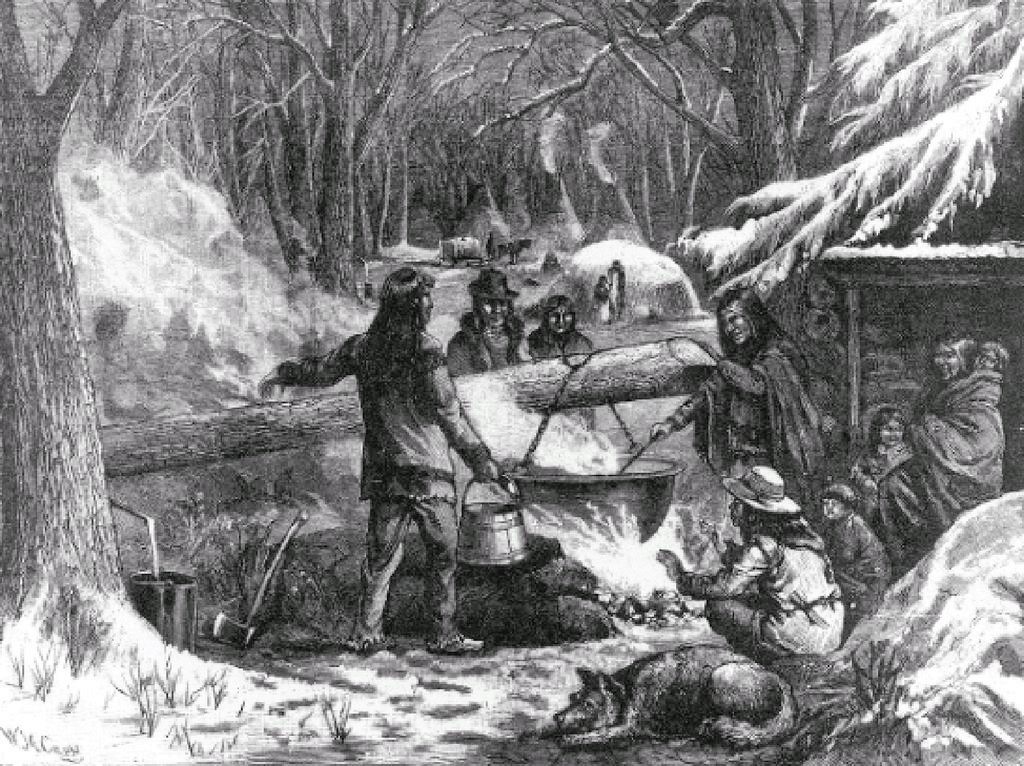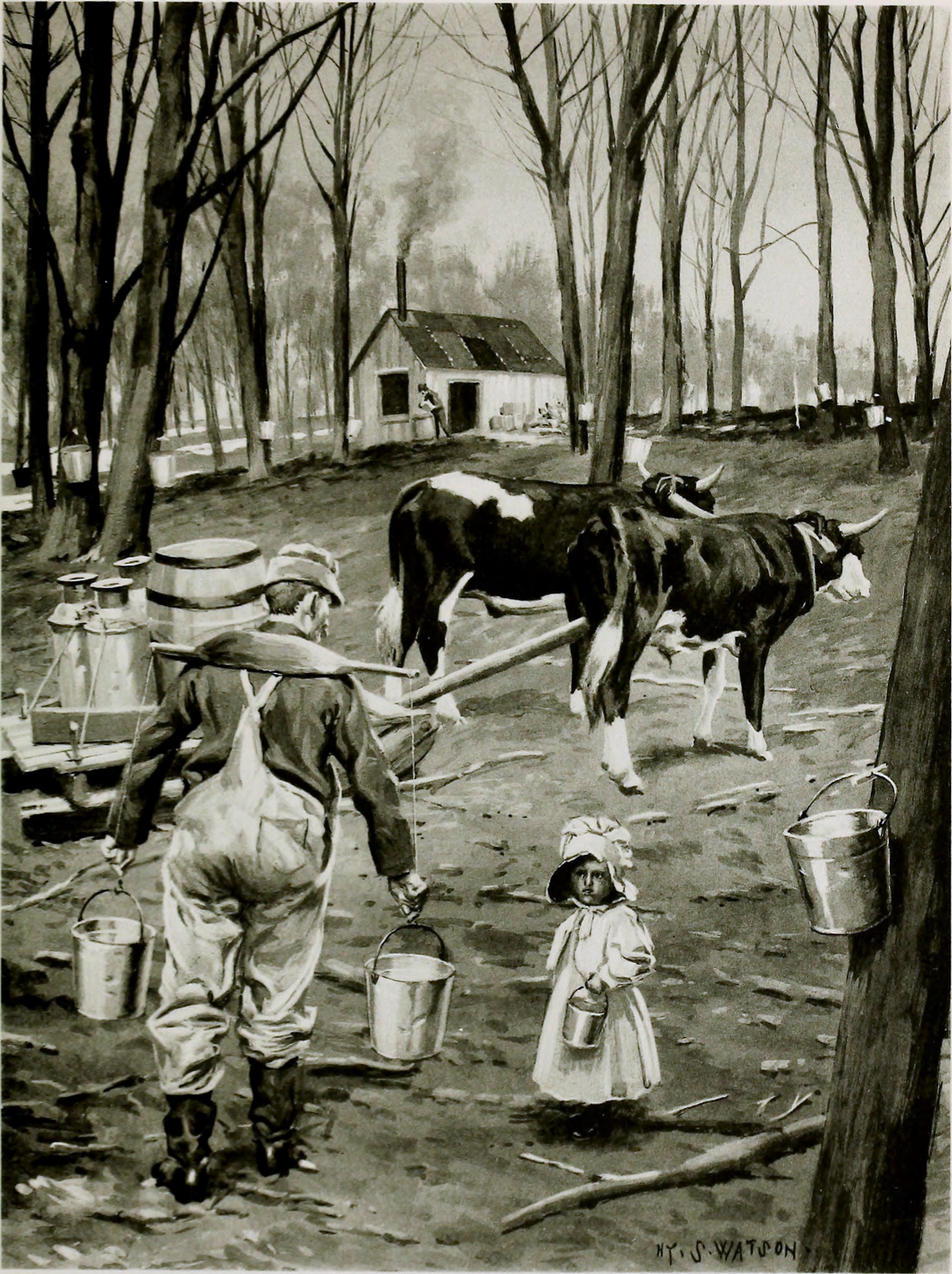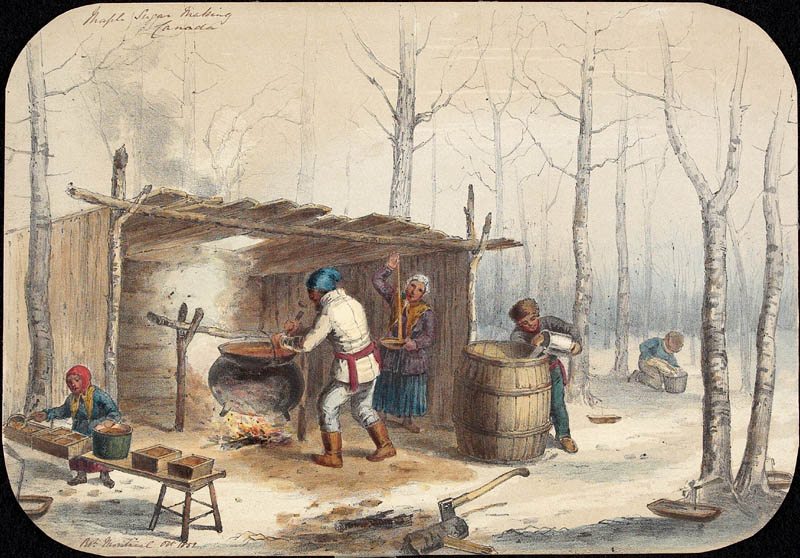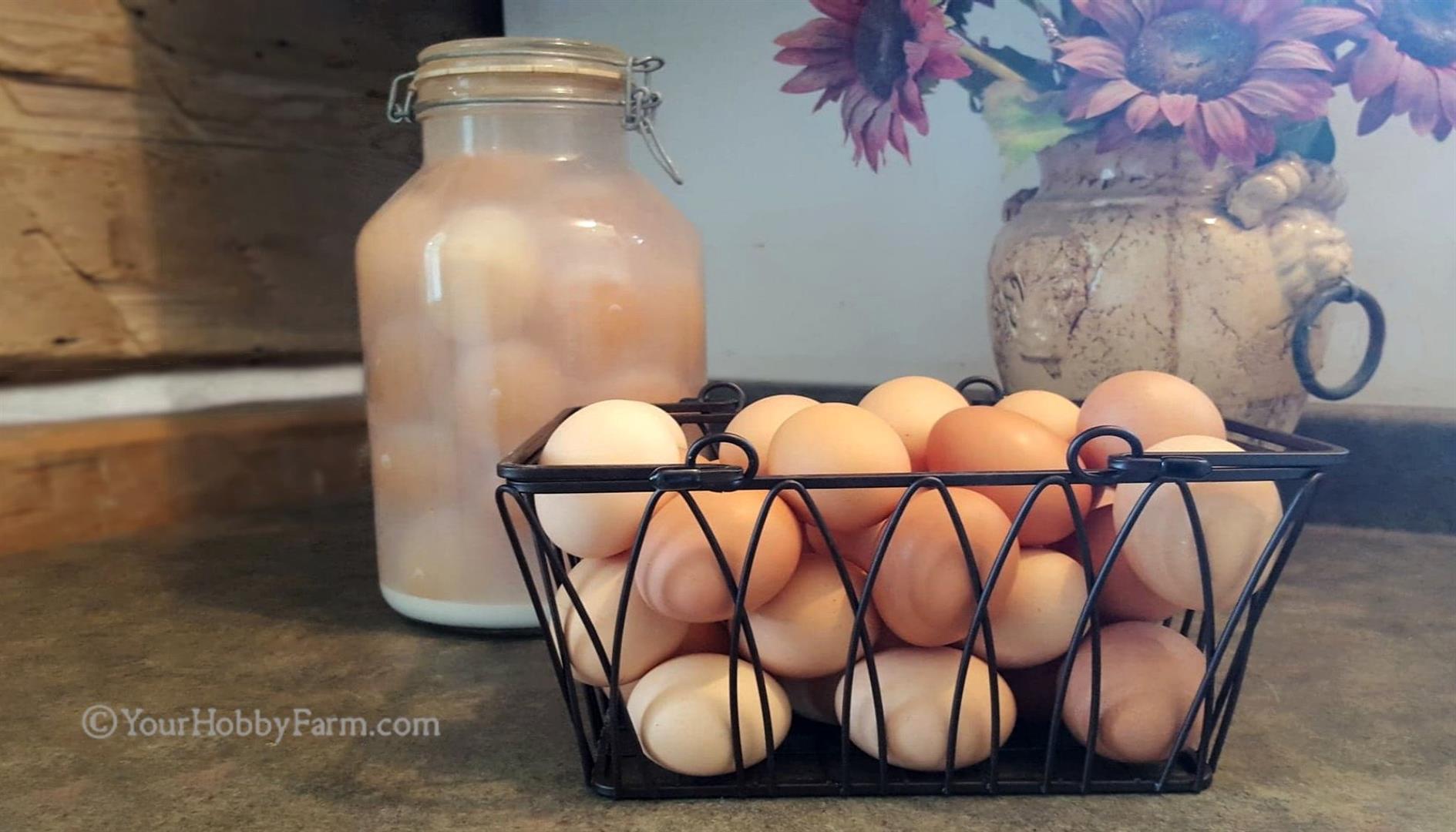History of Maple Syrup
Hey friends and followers! We're changing our website address from YourHobbyFarm.com to HomesteadJoys.com.
With ongoing homestead responsibilities, this transition may take some time. Save our New Logo and QR code for easy navigation! We’d love you to join us in our journey!
 Homestead Joys Logo
Homestead Joys Logo
Looking back over the centuries at the history of maple syrup makes us truly appreciate this sweet gift the Native Americans shared with the European settlers! They showed us the secrets of making pure maple syrup that we still use it today! Join us for a peek into maple syrup history.
Celebrating the History of Maple Syrup
Who discovered the sweet secret hidden within the veins of maple trees? Who first honed the skills of harvesting maple syrup? Who passed on this ancient secret and shared it with us?
The Ingenious Indigenous People
The history of maple syrup's first discovery fades far into the past of native North America and is clouded in sweet mystery. Each Indian tribe had their own name for it. "'Sinzibuckwud’ is the Algonquin name for maple syrup, which means "drawn from the wood".
Having walked through our own maple bush in very early spring, I have plucked icicles hanging from a branches of maple trees, and enjoyed their sweetness. I'm sure the indigenous people did the same.
Delving into the history of maple syrup, we find that long before they traded furs for the newcomers' white sugar, the North American Indians had learned to harvest the sap of maple trees. They even valued maple water. It was for them a curative, a sweet, strengthening tonic for the body at the end of winter. They boiled the sap down to create the syrup and further processed it to create long lasting maple sugar.
There are a few different legends about this sugary maple sap, with its sweet, woody flavor, being discovered, processed, and enjoyed by the Indians.
Each spring, Indigenous communities would move from their winter hunting grounds into the sugar bush. There they began the sugar making process. They made V-shaped incisions into the sugar maple trees, inserting hand-carved, concave pieces of bark, wood, or reeds to the incisions, and collected the flowing sap.
Aboriginal tribes celebrated rituals around making maple syrup and sugar at the time of the Sugar Maple Moon, the first full moon of spring, with a Maple Dance. Dave Lane, of Saint Mary's University in Halifax explains: "The Mi'kmaw people have named all the moons around the year based on what's happening in nature. And one of the moons this time of year is the Maple Moon. That's when the sugar maple trees start to produce sap."
They knew the best maple trees for syrup. The evaporated maple sap, which we'd call maple syrup, became a tradition which was passed from generation to generation, and as the Maple Moon rose each Spring, the harvest of the maple trees sap would begin. Deliciously fragrant steam would fill the air as it boiled.
Known to be both healing and nourishing, maple sap had been valued by the Native Americans for centuries. It's not surprising that the Indians appreciated the maple syrup health benefits. An interesting list of maple syrup health benefits can be found here.
It was the Indians who introduced it to the first European explorers and settlers. One taste and the settlers were asking, "What is maple syrup, and how do you make it?" So, the Indians taught them to find the best maple trees for syrup and maple sugar. They shared their secrets of collecting sap from maple trees, and boiling maple sap into syrup, and ways of cooking with maple syrup. And since maple syrup shelf life is somewhat limited, they also taught them how to make maple sugar which was a sweetener that lasted indefinitely.
These maple products were among the many gifts from the land's bounty the Indians shared with the newcomers, helping them to survive harsh winters. Later they began to trade their "sweetwater" with the colonists.
The Settlers and their History of Maple Syrup
The European newcomers wanted to know how to get maple syrup for themselves. Native Americans taught the early settlers how to tap the trees and make syrup, and they began using maple sap as a source of sweetness. Soon it became a way of life for many.
Then in 1764, the Sugar Act was passed which imposed high tariffs on imported sugar. This resulted in growing popularity of maple sweeteners.
The history of maple syrup was giving way to change. Having learned from the Indians how to collect maple sap, the settlers added their own techniques to the procedure.
They learned to manually drill holes into trees. Unlike the natives, they had augers which they had brought with them from Europe. They used these to bore out the tap holes in the maple trees.
They carved little wooden spiles, and pushed these little wooden hand-carved spouts into the holes enabling the maple sap was to drain out. They hung buckets from nails below the spouts to collect the sap.
Sometimes they used sleighs drawn by oxen or horses when collecting the sap from the buckets. People also used yokes, carrying two buckets at a time to the sugar shack where the boiling was being done.
Their large iron cooking cauldrons which they had brought with them from Europe were perfect for boiling the maple sap to syrup. Hanging the large iron pots over open fires, they boiled the sap to concentrate it into thick, sweet maple syrup. Often, they'd condense it further into maple sugar.
In the 17th and 18th centuries, the settlers began boiling nearly all of the sap they collected down into sugar. Pure maple syrup would last a for a limited time, but maple sugar could be kept indefinitely. Farmers who were busy with their crops and cattle in the spring, summer, and fall, began making maple syrup during their winter off season for an additional income. Some farms still practice this today.
The 1803 the Farmer’s Almanac, March issue, proclaimed, “prepare for making maple sugar, which is more pleasant and patriotic than that ground by the hand of slavery, and boiled down by the heat of misery.” This statement referred to the molasses trade which had required slave labor. The Civil War and its wonderful overthrow of slavery caused a great increase in maple syrup production in the United States. With the invention of tin cans, the American maple syrup industry began to thrive.
This leads us to a brand of maple syrup that we can still obtain today. Log Cabin Maple Syrup history goes back to 1887 when it was introduced by a St. Paul, Minnesota grocer named Patrick James Towle.
Patrick Towle was born in 1835 and lived in the village of Forest Lake, Minnesota. When he began to produce his Log Cabin Maple Syrup, he named the syrup in honor of his childhood hero, Abraham Lincoln, the 16th President of the United States. Abe Lincoln grew up in a log cabin, deep in the woods of Kentucky, hence the brand name ‘Log Cabin’.
At first Towle offered pure maple syrup, but after a few years he introduced a blend of cane and maple syrup which he called Towle’s Log Cabin Camp Syrup. The public liked the taste of this blend of the sweeteners. The blend was less costly than pure maple syrup.
Sadly today, Log Cabin Maple Syrup no longer contains any real maple syrup! It's now basically corn syrup, water, sugar with flavorings and preservatives added.
If you're looking for real maple syrup, you can check on Amazon for it. Also, consider contacting maple syrup producers and ask them to ship it to you. It can be pricey, but when you taste it, you'll know why it's called 'liquid gold'. It's really that healthy and delicious!
National Maple Syrup Day is now observed in the USA on December 17th, celebrating this wonderful amber substance, pure maple syrup, that we have all come to know and love.
If you are interested in learning more of the history of maple syrup, have a look at this page...
And here's a very interesting timeline of history of maple syrup that covers from 1540 to 1999.


We'd Love to Hear About Your Maple Syrup Experiences
and Favorite Ways You Use It!
Have you made maple syrup or other maple products? Do you have maple syrup adventures or memories that you'd like to share? How about favorite recipes that you use with maple syrup? If so, we'd love to hear about it! Let us know in the form below, and please share your pix! It's fun to learn from one another!
Just click into the title box below and go from there. Be as wordy and descriptive as you want! Don't be shy about sharing maple syrup knowledge, your experiences, or things you've learned... There's plenty of room for your story on our website. And don't forget to share photos!
Then when published, you can share your story and pictures with your friends through 'your page' here on YourHobbyFarm.com!
Translate This Page!
Traduire Cette Page!
¡Traduzca Esta Pagina!



Piping Rock©
Bringing you the highest quality In hundreds of health care and life-enhancing natural products at the
lowest cost to you!
high reviews, crazy deals,
happy, healthy customers!
Click here and save today!
Business Appreciation
* This website is not affiliated with
Piping Rock

Supporting our local feed mills
Meunerie Alexandria Milling
613-525-1973
Great Products • Great Prices
Great Service
Click the pic for their
facebook page!
Meunerie Alexandria Milling
Established in 1962 by The Massie Family
Email: Alexandriamilling@hotmail.Ca
475 Massie Crescent
Alexandria, Ontario, Canada
~~~
Small Business Appreciation
* This website is not affiliated with
Meunerie Alexandria Milling





















